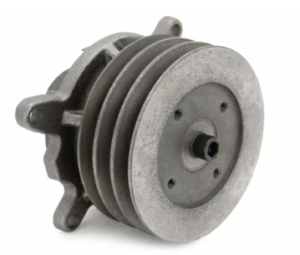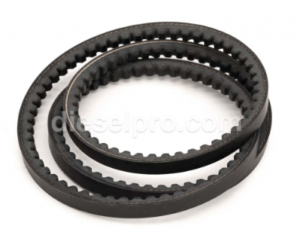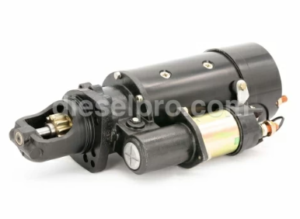
Caterpillar 3208 Marine Engine – Major Maintenance Tasks at 9000 Liters / 250 Hours / Annually
The Caterpillar 3208 marine engine thrives when maintained according to a rigorous schedule. Every 9000 liters (2400 US gallons) of fuel consumption, 250 service hours, or once per year, this engine requires a comprehensive maintenance check. This interval encompasses inspections, cleaning, adjustments, and part replacements essential for engine longevity and reliable marine operation.
Here’s a detailed guide to the major servicing tasks for this milestone:
Inspecting the Auxiliary Water Pump

Purpose of the Auxiliary Water Pump
The auxiliary water pump circulates coolant to ensure consistent engine temperature and prevent overheating. In marine environments, the pump faces harsh conditions, including exposure to debris, corrosion, and scale buildup.
Steps for Inspection
-
Locate the pump on the engine.
-
Inspect for visible signs of leaks or corrosion.
-
Check bearings and seals for wear, play, or damage.
-
Rotate the pump manually to feel for smooth operation.
-
Inspect impellers and wear plates if access allows. Replace if worn or damaged.
Best Practices
-
Use OEM repair kits for replacements.
-
Perform inspections more frequently in harsh conditions.
Inspecting, Adjusting, or Replacing Belts

Importance of Belt Maintenance
Belts drive critical components like the alternator and water pump. Worn or loose belts can cause underperformance or failure.
Procedure
-
Remove belt guards to inspect condition. Look for cracks, glazing, fraying, or uneven wear.
-
Check tension using a tension gauge or by applying moderate pressure; belts should deflect within manufacturer’s specifications.
-
Adjust tension by repositioning components and tightening adjustment bolts.
-
Replace belts if they show damage or improper tension. Use matched sets for multi-belt systems.
Checking Battery Electrolyte Levels
Starter for Caterpillar 3208 Natural and 3208 Turbo, 12 Volts
Why It’s Critical
Maintaining proper electrolyte levels prevents battery damage and ensures reliable engine starting.
Steps
-
Open battery covers and inspect electrolyte levels. Use distilled water to top off if below the “FULL” mark.
-
Check for corrosion on terminals and clean with a baking soda solution.
-
Inspect cables for tight connections and signs of wear.
Safety Precautions
-
Wear eye and hand protection; battery acid is corrosive.
-
Use only distilled water to avoid mineral buildup.
Testing and Adding Coolant Supplemental Coolant Additives (SCA)
Role of SCA
SCA prevents scale, corrosion, and cavitation in the cooling system, essential for marine engine health.
Procedure
-
Test SCA concentration using a test kit.
-
Add SCA if levels are below specifications.
-
Record additions and monitor trends for future reference.
Tips
-
Never exceed the recommended concentration.
-
Mix thoroughly before restarting the engine.
Cleaning or Replacing Engine Air Cleaner Elements
Importance
Clean air filters ensure optimal combustion and protect internal components from debris.
Steps
-
Remove the air cleaner element and inspect for damage.
-
Clean using low-pressure air or water, depending on the filter type.
-
Replace if damaged or excessively dirty. Use OEM-approved elements.
Cleaning Engine Crankcase Breather
Why It Matters
A clean crankcase breather prevents pressure buildup and oil leaks.
Steps
-
Locate the breather assembly and remove it.
-
Wash the element in clean, nonflammable solvent and dry thoroughly.
-
Reinstall, ensuring proper fit and seal.
Obtaining Engine Oil Sample for Analysis
Purpose
Oil analysis helps detect engine wear and contamination.
Procedure
-
Run the engine to normal temperature.
-
Draw oil from the sampling valve or dipstick tube using clean sampling tools.
-
Label sample containers accurately.
-
Send samples for laboratory analysis and interpret results for maintenance planning.
Changing Engine Oil and Filter

Steps
-
Warm up engine for better oil flow.
-
Open drain valve or remove drain plug to drain oil.
-
Replace the oil filter using a filter wrench.
-
Fill with recommended oil and check level.
-
Run engine, check for leaks, and confirm oil level after settling.
Checking Engine Protective Devices
Purpose
Protective devices (alarms, shutoffs) guard against critical failures.
Steps
-
Test alarms and shutdowns by simulating faults.
-
Inspect wiring and connections for wear or corrosion.
-
Replace faulty sensors or alarms.
Inspecting and Adjusting Exhaust Restrictor
Role
The exhaust restrictor controls backpressure for efficient emissions.
Procedure
-
Inspect linkage and actuator for wear.
-
Check for leaks or blockages in the exhaust path.
-
Adjust restrictor settings per manufacturer specifications.
Replacing Fuel System Filters and Draining Fuel Tank Sediment

Steps
-
Replace primary and secondary fuel filters using clean procedures.
-
Drain sediment from the fuel tank to remove water and contaminants.
-
Prime the fuel system and check for leaks.
Inspecting or Replacing Hoses and Clamps

Steps
-
Check all hoses for cracks, bulges, or softness.
-
Inspect clamps for tightness and corrosion.
-
Replace damaged hoses and clamps with OEM parts.
Cleaning or Inspecting Magnetic Pickups
Purpose
Magnetic pickups monitor engine rotation for control systems.
Steps
-
Remove and clean pickups of debris and metal particles.
-
Inspect wiring and replace damaged components.
-
Reinstall pickups, ensuring correct gap and alignment.
Replacing Oil Fumes Filter

Importance
Maintains air quality and prevents oil mist buildup.
Steps
-
Remove the oil fumes filter housing.
-
Replace filter elements with OEM parts.
-
Clean housing and reinstall.
Cleaning or Inspecting Sea Water Strainer
Purpose
Prevents debris from entering the cooling system.
Steps
-
Remove the strainer basket and clean thoroughly.
-
Inspect for damage and replace if needed.
-
Reinstall basket and check for leaks.
Conclusion
The 9000 L (2400 US gal), 250 service hours, or yearly maintenance interval for the Caterpillar 3208 marine engine is essential for its reliability and longevity. Each task—from checking belts to replacing filters—contributes to maintaining optimal performance, reducing the risk of failures, and ensuring safe marine operation.
Always refer to the Caterpillar Operation & Maintenance Manual for detailed instructions, torque specifications, and recommended practices.
Additional Resources
Practical Guide To Servicing The Caterpillar 3208 Marine Engine
Marine CAT 3208 Component Maintenance Life
Caterpillar 3208 Injectors: High-Quality Aftermarket Options from Diesel Pro Power
The History of the Caterpillar 3208 Engine
Common Applications of the Caterpillar 3208 Engine
Troubleshooting Common Issues with the Caterpillar 3208
Maintenance Tips for Maximizing the Life of Your Caterpillar 3208 Engine
Comparing the Caterpillar 3208 to Other Marine Engines



 Free US Calls: 1-888-433-4735
Free US Calls: 1-888-433-4735 International: 305-545-5588
International: 305-545-5588
